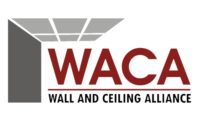Walls & Ceilings' Annual Excellence Awards Categories -
Drywall
Plastering/Ornamental
EIFS/Stucco
Ceilings
Metal Framing
ICFs/SIPs
WeKanDo Construction
During a two year period WeKanDo Construction had the opportunity to work on a remodel of a 1919 design by the internationally acclaimed architect Whitney Warren, the ultra luxury Condado Vanderbilt Hotel. The Beaux Arts design of the Condado Vanderbilt as a stand-alone palatial building, created a series of challenges to match the quality of the original workmanship that identified the building as an example of the Grand Hotel typology built in the Spanish Revival style in the early part of the twentieth century.
The current rehabilitation project respects the architects’ original plan for the interior layout, interior ceilings and interior details in accordance with the architects’ original specifications. Though more durable materials were used in the recent reconstruction, complex coordination and scheduling among trades was key to preserve the relative simplicity in the structures, with the ornamentation contained within specifically designated areas in order to maintain clean lines required in the Spanish Revival Style.
The existing building conditions at the time of the remodel, original concrete structure, new requirements and new building codes also imposed the creativity of composition and balance of multiple finish solutions. With the help of colleagues and suppliers the company was able to recreate the features of heraldic, mythological and maritime ornamentation that lends an Old World palatial ambience to the finish work.
Today, the hotel’s mass stands alone as it was originally designed in 1919.
|
Category: Drywall Project Name: Vanderbilt Hotel Project Location: San Juan, Puerto Rico Square footage: Between 50,000-100,000 Subcontractor budget: $3 million Manufacturers and Products:
|
BakerTriangle
BakerTriangle began metal lath and trims for stucco walls in July of 2010 and almost 60,000 man hours later wrapped up the exterior stucco and stone work in May of 2011. The architects utilized more than 68,000 square feet of stucco on the exterior walls and soffits. This facility was also the home for almost 92,000 square feet of natural stone and 4,500 lineal feet of natural stone cap.n the middle of Westlake Texas you will find Deloitte University. This 107-acre site is the home to a state of the art leadership development center. This facility houses 800 guest rooms, multiple classrooms, conference rooms, a business center, two ballrooms, dining areas and a fitness center. They even have the Social Venue known as “The Barn”, a great place to unwind after a long day of learning. If sitting by the beautiful man made pond is too relaxing there is a jogging path or you can go hit a few balls by the field house. The resort-like university pretty much has it all.
The Gensler architects Rene Lesur and Pete Chalfant—along with Turner Construction—demanded the highest quality for all interior and exterior installations. Inspections and quality control checks were performed by BakerTriangle, Turner and Gensler throughout the installation process to ensure that all ASTM standards were followed.
The rigid insulation system added to the exterior wall made “typical” window, door and control joint details, not so typical. A two-story mock was constructed to test all of the exterior wall components and work out the details for each cladding system. After a few teardowns, rebuilds and several weeks, they were able to iron out the wrinkles and proceed with the installation. Another challenge was the weight of the natural stone provided by Upchurch Kimbrough. The stone had to meet certain tolerances to keep the weight within an acceptable range. The capstones set at the parapets weighed between 125-150 pounds each and took multiple people to set. Getting to the work, BakerTriangle and Safeway Scaffold built six stories of scaffolding almost a mile long between all of the buildings on the site. One of the biggest challenges all projects face is producing quality work quickly while maintaining safety. This project for BakerTriangle was completed with zero lost time injuries.
“Lesur and Chalfant were great to work with and kept the project moving through the various challenges we faced. One thing that made this project unique was the rigid insulation system that we installed on the exterior wall,” says BakerTriangle’s Brad Baker.
|
Category: Plastering/Ornamental Project Name: Deloitte University Project Size in overall square footage: 68,000 Project Location: Westlake, Texas Initial Project Budget: $2.1 million Final Cost of Project: $2.6 million Owner: Deloitte Contractor: Turner Construction Architect: Gensler Materials:
|
Capparelli Contracting Co. Inc. and KHS&S Contractors
The new facility is a $300 million, 370,000 square feet, three-story, 337 bed patient tower and surgery center.
The team of Capparelli/KHS&S completed more than 19,000 square yards of plaster and 73,000 linear feet of trim throughout the entire healthcare facility. The team worked closely with the general contractor, waterproofing consultant, and owner to ensure the intended look was achieved and would be built to last.
The project also utilized 3-D modeling coordination and custom prefabricated medical head wall units.
The Capparelli/KHS&S completed the following scopes of work on the project:
- Interior framing and drywall
- Exterior framing
- Above grade waterproofing
- Exterior plaster
- Fireproofing
- Venetian Plaster
- Interior and exterior water features
- Interior and exterior precast stone
|
Category: EIFS/Stucco Project Name: Santa Barbara Cottage Hospital Project Completion Date: December 2011 Size in overall square footage: 370,000 Project Location: Santa Barbara, Calif. Initial Project Budget: $290 million Final Cost of Project: $300 million Materials:
|
Heartland Acoustics & Interiors
On a building that has so many different uses, the design was critical so that the use of each building would function seamlessly with the other. Contemporary and modern aesthetics were used to create smooth transitions between the three areas. High noise reduction suspended acoustical ceilings were utilized in the hallways of the hotel to minimize disruptions. Black ceiling grid and tile were used in the Drinking/Mixology Lab to condone an atmosphere required for its educational purpose. Fabric wrapped acoustical wall panels were used in the Classrooms and the Lobby to provide both aesthetic and acoustical value since these areas have high traffic volumes of students and public. A 2x2 modular wood ceiling system in the Wine Cellar Lab provided not only an acoustical barrier between rooms but also gave a very comforting wood look to an otherwise bland space.
The project’s high profile location in the heart of downtown Denver and the complicated building layout are challenges that were overcome with teamwork. Metro State Hotel is under the observation of all of metro Denver and as a result, safety, cleanliness and appearance of the project were of the highest priority. The building itself is very complex and intricate and ran in three phases. This complicated the schedule and coordination between all the subcontractors and each subcontractor’s individual scopes. The general contractor implemented several coordination and safety practices to counteract the challenges the job presented. POD (Plan-of-the-Day) meetings were held daily to ensure that proper coordination between subcontractors was taking place. This specifically allowed for those production issues created by the complexity of the job to be resolved using all subcontractors associated with the project. This team brainstorming approach created the necessary coordination and communication to allow all subs to work freely and meet their individual production requirements. The scope of work was completed over a seven month phased schedule using over 1,600 man-hours with no accidents.
“This project took a large amount of project management, field supervision and skilled craftsmanship to assure that all of the work was done correctly and on time. With a strong team at Mortenson Construction and hard work by our own managers and field crews we were able to leave behind an impressive finished building that our company is very proud of,” says Heartland Acoustics & Interiors President Jason Gordon.
|
Category: Ceilings Project Name: Metro State Hotel Project Completion Date: July 2012 Size in overall square footage: 55,517 Project Location: Denver Initial Project Budget: $120,518 Final Cost of Project: $198,354 Key Players: General Contractor: Mortenson Company Architect: JG Johnson Materials:
|
Plaza Construction/Schiavone Construction Co. LLC
Fulton Center will simplify the maze of platforms, entrances and exits around the eleven subway lines that serve Lower Manhattan. It will also provide an underground connection between those lines and the Port Authority of New York and New Jersey’s PATH train hub, the World Trade Center, and the ferries at the World Financial Center. Fulton Center will be a retail destination with more than 70,000 square feet of leasable space.
During the planning process, Radius Track was contracted to manufacture and install pre-fabricated panels made specifically for projects that challenge conventional architecture. Engineers worked with the task of enclosing the cone-shaped profile with custom-shaped steel panels in order to support the space-animating skylight. The manufacturer created a special sequencing system from an offsite location to cut down on building costs and set the construction team up for a seamless installation process.
The subcontractors were responsible for lining the oculus in eight-foot panels. The oculus base (conical section) measures almost 60 feet tall at its highest point and spans 90 feet across at its base diameter, covering a total surface area of 8,294 square feet. The job required 44 panels, each measuring about eight-feet wide and 19-feet long. Organized in two tiers and fit together with expert precision, the panels highlight the use of 3-D computer modeling, accurate and economical detailing, specific attention to connections and technology.
Housed atop a large glass structure, the oculus’s glass ceiling allows light to stream into the interior space below and addresses the station’s former problems with low lighting. The oculus sits on a large, truncated (or sliced at an angle) cone that is positioned atop a glass box that encloses the building. Grimshaw Architects, the design architect, with Arup, the architect of record and engineer, designed the building for the Fulton Center to solve the safety and aesthetic concerns that marred the old space.
|
Category: Metal framing Project Name: Fulton Street Size in overall square footage: 8,294 (size of oculus) Project Location: Lower Manhattan, New York Initial Project Budget: $450,000 (Radius Track contract size) Final Cost of Project: $450,000 Key Players and Certification Information
Owner: Metropolitan Transportation Authority Design Architect: Grimshaw Architects Architect of Record and Engineer: Arup Interiors Subcontractor: The Donaldson Organization/Donaldson Interiors Exterior Stainless Steel Metal Enclosure Contractor: Jordan Panel Systems
Oculus Curved Panels: Radius Track Corporation NCI Panel Systems (Subcontract Assembly) THHinc (Consulting Engineer) |
California ICF LLC
The building is located on a hillside creating multi levels. The second floor cantilevers 40 feet out from the shell and supports a roof top garden and patio. Connecting the guest house to the main house is a 40-foot sky bridge. The office is on the third floor designed with 180 degree view. The open kitchen flows into the living room and dining area. The transition to the outside deck blends seamlessly with two 14 feet sliding glass doors that disappear into wall pockets leaving a 28 foot opening without support columns.
All the floor and wall finishes were chosen for their unique qualities and green aspects. The paint used has zero VOC components. Unique natural wall clay plaster, custom handmade wall paper, natural stone vanities and kitchen counters, zero VOC wool carpet and a stained concrete floor were all incorporated into the design.
The builders spent many hours researching products and testing concepts prior to using them. Their combined efforts created a master piece that will be shared with many design professionals.
|
Category: ICFs/SIPs Project Name: Casa Bella Verde Size in overall square footage: 7,500 Project Location: El Dorado Hills, Calif. Initial Project Budget: $2 million Final Cost of Project: $1.8 million Project Manager: Briana Alhadeff Architectural ICF Consultant: Nicholas Nikiforuk Builder: Kevin Desantis Structural Engineer: Dave Gowers Materials:
|



















Report Abusive Comment